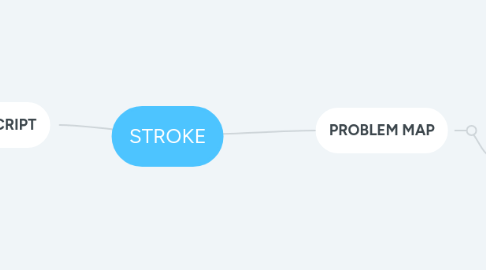
1. PATIENT ILLNESS SCRIPT
1.1. MECHANISM
1.1.1. AThis is a case of D.C.K a 82 y/o male retired security guard with Hypertension (+) stroke recovering the (R) side.The pt. was diagnosed with stroke resulting from blood clots forming in the arteries leading to the brain which blocks the blood flow and causes stroke (HTN)
1.2. EPIDEMIOLOGY
1.2.1. Pt. is 82 years old male
1.3. TIME COURSE
1.3.1. stage 2 recovery stage of stroke of the (R) with high risk of development of basic limb synergies with minimal voluntary movement responses present as well as initiation of spasticity evident in muscles groups for synergy movements
1.4. CLINICAL PRESENTATION
1.4.1. - (+) Activity limitation as to transferring from bed to wheelchair, eating using his (R) hand and inability to walk - (+) pain on the (R) shoulder - (+)Wheel chair bound -(+) Drooping of the R eyebrow - (+) Mild Dysarthria - (+) Non-pitting Edema of the hand and foot -(+) Decreased grip strength of the (R) hand - (+) weak functional muscle strength of (R) UE. - (+) Grade 1+ spasticity on R UE - (+) Postural Deviation - Poor standing balance - Good standing balance and tolerance - Moderate dependency in performing ADL - (-) Typical arm posture - (-) Erythema, bruises, discoloration - (-) Wounds - (-) Pressure sores - (-) sensory deficit - (-) pathologic reflex
2. PROBLEM MAP
2.1. Moderate activity restriction in his ADLS and difficulty in performing ambulation d/t impaired motor function
2.1.1. ROM
2.1.1.1. All are WNL except for
2.1.1.1.1. All movements of (R) UE
2.1.1.1.2. Hip flexion
2.1.1.1.3. Hip abduction
2.1.1.1.4. Knee Extension
2.1.1.1.5. Ankle DF and PF
2.1.2. Grip Strength
2.1.2.1. Pt. has decreased strength of the ® hand
2.1.2.1.1. Difficulty in ADLs such as grooming and feeding and holding the handrail on his R hand during gait training.
2.1.3. Figure 8 of the hand and foot
2.1.3.1. Pt has mild non-pitting edema on the R hand
2.1.3.1.1. Difficulty in performing hand closure
2.1.4. FMT
2.1.4.1. Functional muscle strength of the R LE but weak functional muscle strength of R UE.
2.1.4.1.1. Difficulty in performing ADLs such as sit-to-stand and transfers.
2.1.5. Tone Assessment
2.1.5.1. Pt has grade 1+ spasticity on R UE 2 to Stroke.
2.1.5.1.1. Indicative of UMNL, difficulty perform all movements of (R) UE
2.1.6. Balance and Tolerance
2.1.6.1. Good sitting balance and tolerance, poor standing balance and no standing tolerance
2.1.6.1.1. Difficulty in performing sit to stand exercises and ambulation
2.1.7. ADL Analysis / Barthel
2.1.7.1. Pt. compensates in performing ADLs and requires minimal d/t minimal difficulty in all aspects of ADLS
2.1.7.1.1. Provide ADL modifications and provide task-oriented training for bed mobility, transitions, and transfers
2.1.8. Postural Analysis
2.1.8.1. (L) Shoulder is higher than the ® Protruded Scapula (+)Forward Head (+)Rounded Shoulders
2.1.8.1.1. Chin Tucks x 10 reps x 2 sets x OD, Postural awareness

